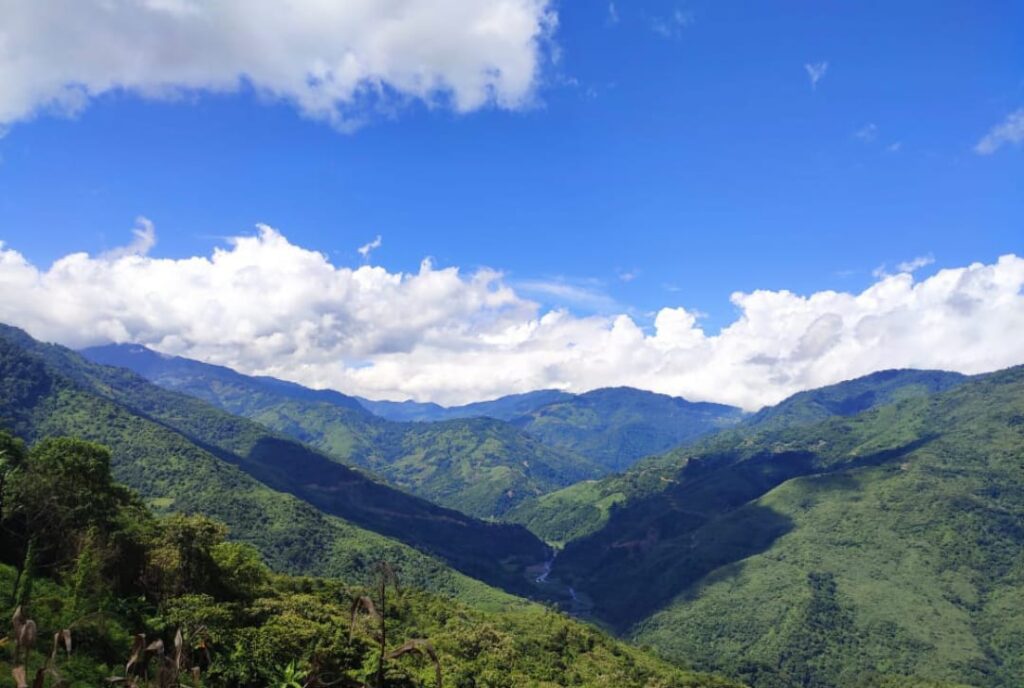The migration of the Tutsas and settlement of the Tutsa villages, evolution of a village society and a system of village governance in the territories of east Arunachal Pradesh is an unique and interesting aspect of the socio-economic history of the people of East Arunachal Pradesh. The Tutsas who migrated from south-east Asia were deeply influenced by the Hindu religion and culture flourished in that region. However, due to the safety and security consideration, quest to acquire cultivable land and escape from variety of political problems in the Southeast Asian region, they moved towards their present habitat by undertaking a different journey covered by them two-three years. Enroute they have settled at hundreds of places and abandoned their villages in search of the area which had better means of livelihood as well as safe and secured.
Initially, they settled at Tutnu which provided them highly secured environment, and no one could challenge their presence in the area. Tutnu became a nucleus from where their diffusion and dispersal started in different directions as the populations of Tutnu grew rapidly and perhaps successive batches of the Tutsa migrants kept on arriving from Rangkhon Sanchik.
At this stage, the Tutnu chief demonstrated his wisdom and leadership qualities. He motivated his people to settle new villages. He also deputed the leaders of different clans to facilitate the settlement of the Tutsas at different locations to create a protective chain of villages which was developed in the interest of Tutnu’s effective safety. The settlement of new villages brought a vast amount of land and natural resources under their control. Secondly the growing population of the principle villages of Tutsas (i.e. Tutnu) was dispersed and got decongested. The growth of population beyond a limit automatically caused a fragmentation of a section of population and naturally led to settlement of the new villages. Thus, whenever the size of population became unbearable for the land and resources of the village, a section of people moved away and settled a new village so as to decongest the village population and reduce pressure on the available land and natural resources. The diffusion of Tutsa population and the dispersal of tribesmen is vast tract, from Changlang in the east and Khonsa in the west, Myanmar border in the south to Makum in the north, made Tutsas emerged as a strong force to be reckoned with. The settlement of new villages in all directions improved safety and security of Tutnu as well as other Tutsa villages. Thus, with the ongoing cycle of multiplication of villages from a parent village continued since 1200 C.E. when the Tutsas reached the Barap Valley from across the Indo Myanmar Border.
Sometimes the dispersal of the tribal population and settlement of a new village in a relatively better environment was also caused by the deteriorating law and order situation and continued armed attacks on a principle village. It is testified by the fact that Tutnu and other villages located on the Myanmar border were frequently attacked by several warriors tribe of Myanmar. They are referred as Thamkhok, Donge, Rangpang, Ngemung, etc. Though the Lungwang of Tutnu and other Tutsas living in different villages fought against these enemies but still the Tutnu chief simultaneously encouraged his tribesmen to settle new villages in all directions so that bulk of his people were kept away from the reach of these enemies. Secondly, in the event of an attack on one village rest of the villages could come prepared to the aid of the village attacked by the enemies who were mostly the head-hunters and savage tribal militiamen Myanmar frequently raiding the Barap valley. With this objective in view, the villages such as Jongpho Hate, Yankang, Sabban, Changnyak, Kolam, Kothung, Katang, Lamsa, Bunting, Panlom, Thungjang, Nogna, Phungsa, Changra, etc. were settled at the directions of the Tutnu Chief. All of these were at a safer distance from Tutnu, but at the same time within a reachable distance from which coming to the aid of Tutnu chief was possible with their full military might in the event of raid from the enemies.
